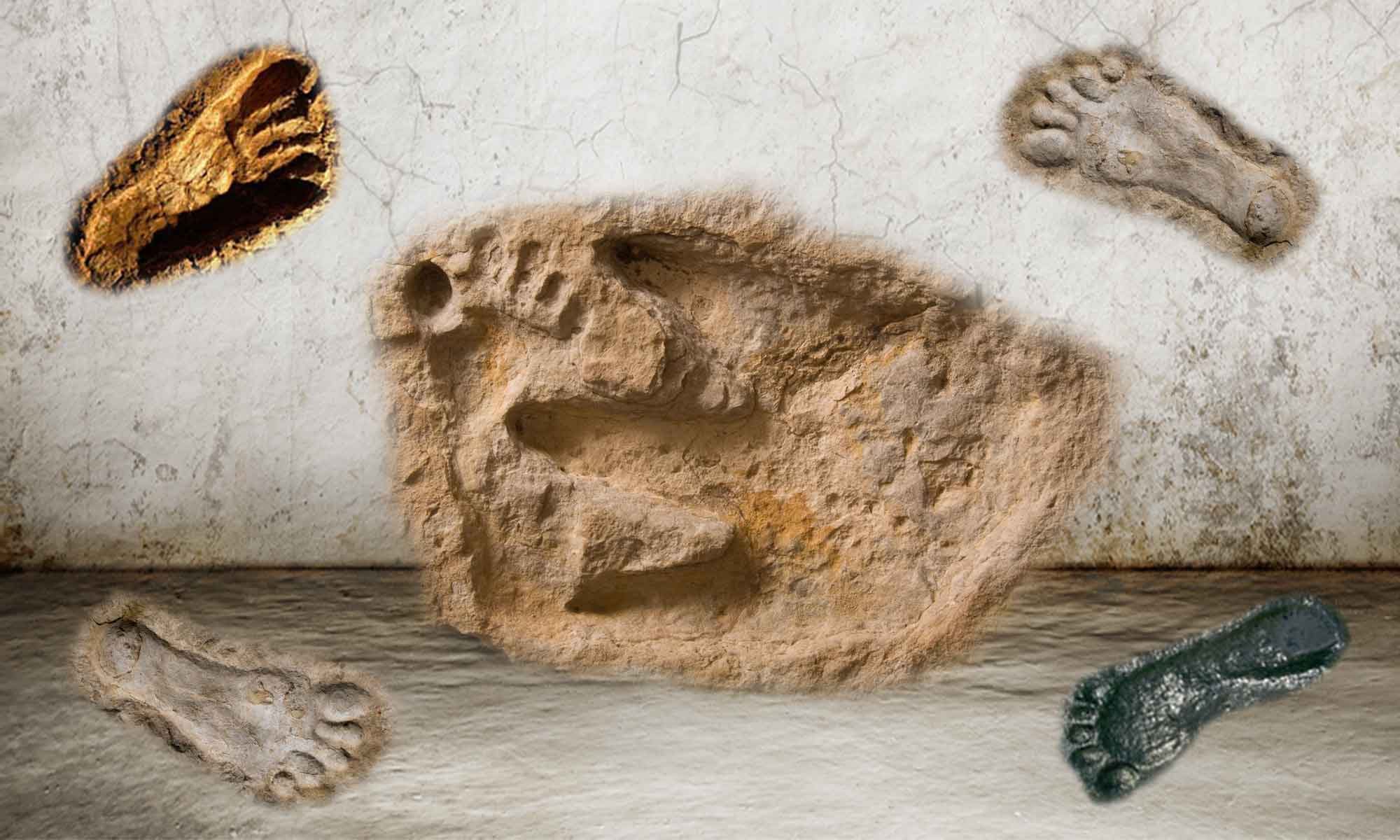Roland T. Bird
Roland T. Bird, A field explorer for the American Museum of Natural History in New York, was passing through NM on a nationwide search for dinosaur tracks.
While in Gallup, NM, Mr. Bird saw a set of human footprints in rock located in the display window of a trading post. He entered the shop to examine the human footprints and was told that the human prints were taken from the rock bed of the Paluxy River. In his writings he said this, “Yes, they apparently are real enough. Real as the rock could be . . the strangest things of their kind I had ever seen. On the surface of each was displayed the near-likeness of a human foot, perfect in every detail. But each imprint was 15 inches long!”—*Roland T. Bird, “Thunder in His Footsteps,” in Natural History, May 1939, p. 255.
Bird referred to the human like tracks as “mystery tracks” in his writings. After talking to the store clerk he found out that two more dinosaur prints from the same rock layer were located in another shop in Lupten NM. Bird headed for Lupten and was was excited to find the dinosaur prints. He was also told they came from the Paluxy river Near Glen Rose TX. These leads prompted him to stop in Glen Rose TX on his way back to New York. After stopping in at the town square he was told to talk to a man named Jim Ryals who knew all about the dinosaur and “mystery tracks”.
Eventually, in 1938 A couple of human footprints taken from the Paluxy river ended up in an Indian trading post store front window in Gallup, NM. A field explorer for the American Museum of Natural History in New York named Roland T. Bird was passing through NM on a nationwide search for dinosaur tracks. He entered the store and examined the human footprints, which he thought were carved, and said this, “
“Yes, they apparently are real enough. Real as the rock could be . . the strangest things of their kind I had ever seen. On the surface of each was displayed the near-likeness of a human foot, perfect in every detail. But each imprint was 15 inches long!”—*Roland T. Bird, “Thunder in His Footsteps,” in Natural History, May 1939, p. 255.
Bird referred to the human like tracks as “mystery tracks” in his writings. After talking to the store clerk he found out that two more dinosaur prints from the same rock layer were in another of Jack Hill’s stores in Lupten. Bird headed for Lupten that evening. He was excited to see the clear dinosaur prints and was told they all came from the Paluxy river Near Glen Rose TX. These leads prompted him to stop in Glen Rose TX on his way back to New York to examine the track claims for himself. After stopping in at the town square he was told to talk to a Jim Ryals who knew all about the dinosaur and “mystery tracks”.
Bird traveled to Mr. Ryals house which was along the banks of the Paluxy river in the area now owned by Dinosaur Valley State Park. After interrupting Mr. Ryals chopping wood for the winter, Bird immediately inquired about the “mystery tracks”. Jim Ryals looked puzzled and then said, “Oh you mean the giant man tracks.”
Ryals was reluctant but took Bird to the river where he was shown the “giant man tracks”. The track he was shown was not as clear as the ones in the store front window and so Bird remained skeptical.
He then asked about the dinosaur tracks and Mr. Ryals told him where he could find them. Bird also got in touch with “Bull” Adams who also showed him the dinosaur tracks along with numerous other residents.
After spending at least a week in Glen Rose he found, some believe was shown, a long trail of sauropod tracks.
This event put Glen Rose on the map. Bird was impressed with the size, number, and clarity of the sauropod footprint trail in the Paluxy and began his intense study and research of the area.
Eventually, seven train car loads of dinosaur tracks were extracted from the river and shipped to the American Museum of Natural History in New York to form a large dinosaur display that exists there to this very day.
Sadly, according to a Reverend xxxxx near the trail of sauropod tracks Bird extracted was a trail of human footprints which he chose to ignore and leave behind in the river bed.
The May 1939 Natural History magazine article was the first and last time Bird mentioned the human tracks in his writings of the Paluxy fossil tracks.

After the above quotes, Bird goes on to say, “It was ridiculous to think they were human footprints…. I felt a keen sense of regret when I told the clerk: ‘I’m afraid your Jack Hill has found himself a pair of fake footprints.'” Bird never thought these were genuine footprints, fought the suggestion that he had for the rest of his life, and no one who works with genuine fossil tracks has since considered them human footprints, either. In fact, the supposed man tracks in the Paluxy have been shown to be the elongated and poorly preserved tracks of theropod dinosaurs walking plantigrade.
Thanks for sharing. Regardless of whether bird thought they were real, there is evidence for fossil human footprint and some of the evidence is quite remarkable. All of this needs to be in the public record for people to decide what they think is true and make up their own minds. Thanks again for sharing. Kind regards, Jeff